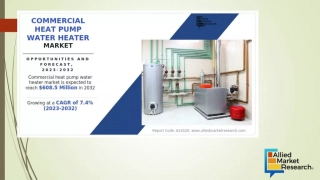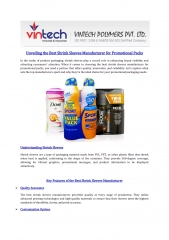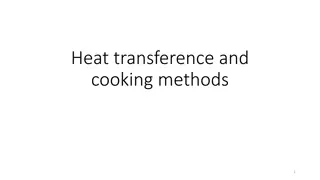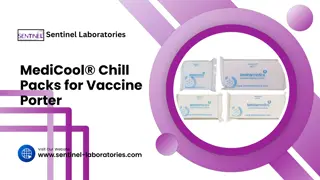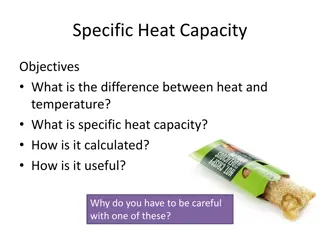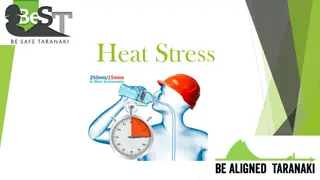Understanding Hydrocollator Packs for Moist Heat Therapy
Hydrocollator packs are a form of superficial heat modality that utilize moist heat to transfer energy to the skin through conduction. These packs, filled with silica gel like bentonite, provide soothing heat for 30-40 minutes when heated in a hydrocollator unit. They come in various sizes and shapes to target specific body areas, such as the lumbar spine, cervical region, shoulder, and knee. The packs are heated in a stainless steel tank, maintaining a temperature range of 75-80°C. Proper insulation with terry toweling is crucial during application to prevent skin damage. The therapy promotes increased blood flow, muscle relaxation, and tissue healing.
Download Presentation

Please find below an Image/Link to download the presentation.
The content on the website is provided AS IS for your information and personal use only. It may not be sold, licensed, or shared on other websites without obtaining consent from the author. Download presentation by click this link. If you encounter any issues during the download, it is possible that the publisher has removed the file from their server.
E N D
Presentation Transcript
It is also known as moist heat pack. Hydrocollator packs are superficial heat modality transferring heat energy to the skin by way of conduction. It is a fabric or canvas pouch filled with silica gel such as bentonite. The main property of the gel is to absorb large volume of water many times its own volume and when heated it gives moist heat for 30- 40 min. The packs are heated in a hydrocollator unit. The gel is contained in set of separate fabric packets so that the whole pack is flexible & the gel confined.
Sizes of the pack: Packs are available in different sizes and shapes. They are designed to fit different body areas such as lumbar spine (medium or large size), cervical (cervical packs), shoulder (medium size) and the knee (medium size). Temperature range: The packs are heated at 75-80*C. During application insulation is added to the packs needed to maintain the comfortable temperature i.e 40-42*C.
It is stainless steel tank in which silica gel packs are heated. The packs are supported on the racks in the tank and it takes about two hours to become fully heated from the cold. The heater is thermostatically controlled which maintain the water in the tank at 75-80*C.
Ensure that the patient is free from any contraindication for this treatment. The hot packs are wrapped in terry toweling before applied to the part so that there are 5-6 layers of towel between the packs and skin depending upon the towel thickness. This provide thermal insulation largely because of the air in the toweling so that although the packs are at 75*C the skin temperature does not rise above 42*C. The treatment can be increased by adding towel layers or decreased by removing the layers.
The toweling can be separated from wet packs by a plastic sheet which prevents wetting of towel and thus enhances the insulating effects. During the treatment temperature is falling but the toweling and packs prevent the skin surface from loosing heat so that the skin and superficial tissue temperature rises.
Increased blood flow: Application of moist heat causes a rapid increase in the surface temperature of the skin leading vasodilation of the vessels produces an influx of blood to the areas in an attempt to cool the tissues. Sedative effect of moist heat is safe analgesic and muscle relaxant. Relaxation of muscle layers result from soothing of superficial nerves. Hyperaemia will result as result of increased blood flow due to vasodilation. There is increase in the flow of nutrients, antibodies, leucocytes and oxygen to the tissues improving the healing of the tissues.
Treatment duration: Moist heat packs are commonly used in treatment for 20-30 min. when treating deeper structure the treatment duration should be increased. Treatment may be repeated as needed but sufficient time should be allowed for skin to cool before the treatment is given.
Indications: Pain & spasm: The moist heat can relieve pain and muscle spasm in superficial region. The rise in temperature causes increase in circulation, removes pain metabolites and thus break down the vicious cycle of pain and muscle spasm. Oedema: Oedematus areas over a large section of extremity can be treated with hot pack in elevation to help absorption of the exudate. Contracture and adhesion: The raised temperature of collagen fiber will make it easier to stretch the contractures and adhesions helping in increasing the joint ROM.
Contraindications: Impaired skin sensation. Acute conditions. Dermatological condition such as eczema, dermatitis. Circulatory dysfunctions like vericose vein, DVT etc. Infections. Open wounds. Cancer or tuberculosis in the area to be treated. Poor thermal regulation.
References: Forster & Palastanga, (2004), Clayton s Electrotherapy; Theory & Practice, Bailliere Tindall, U.K. John Low and Ann Reed, (2008), Electrotherapy Explained, Principles and Practice, Elsvier, India.


